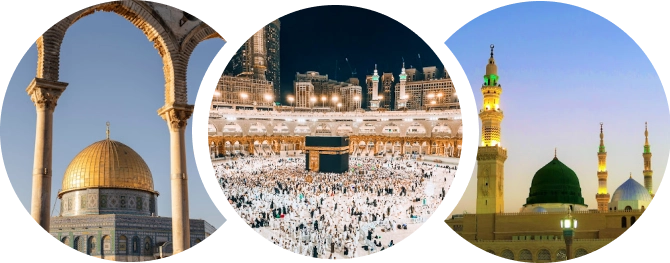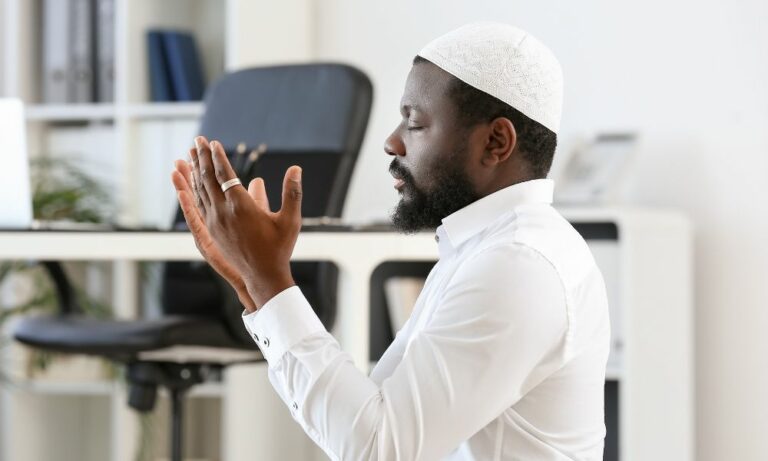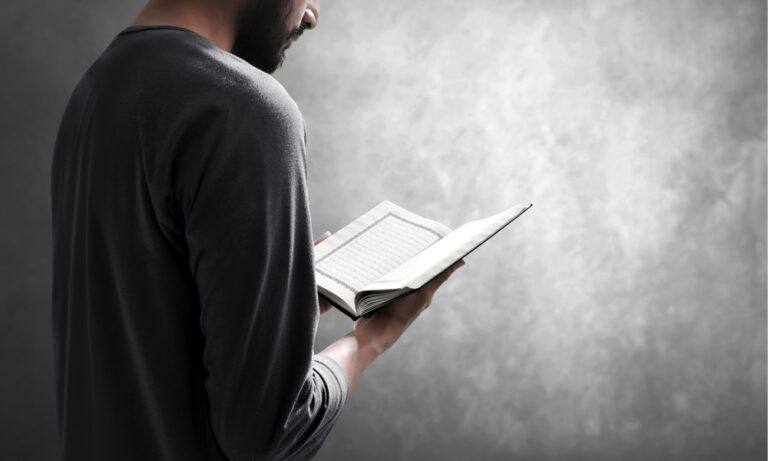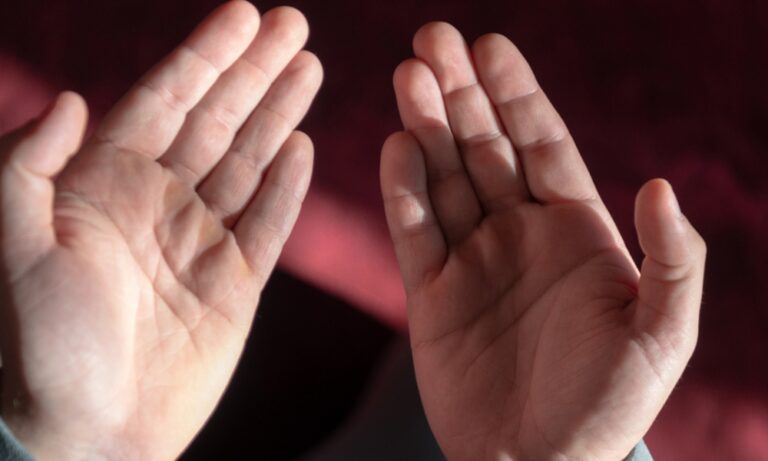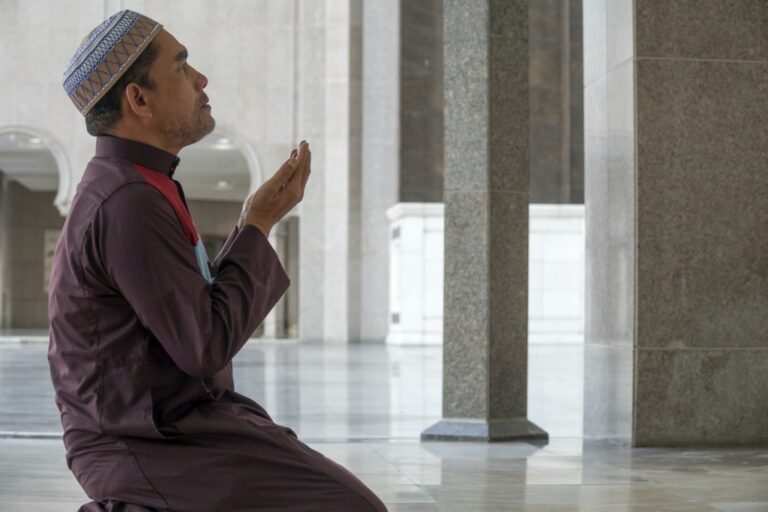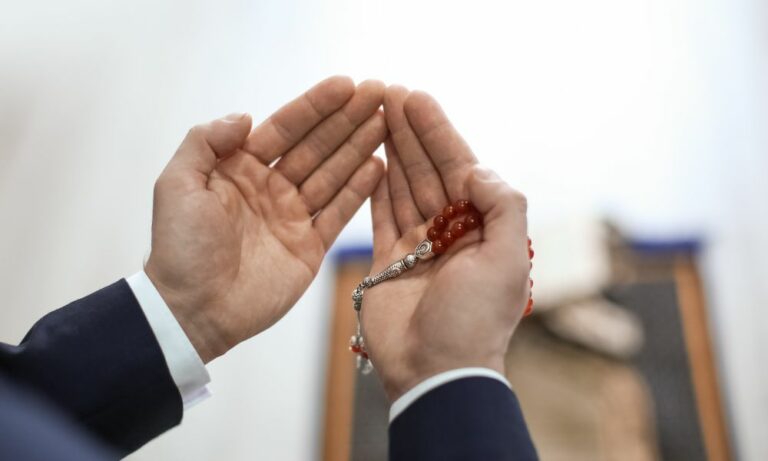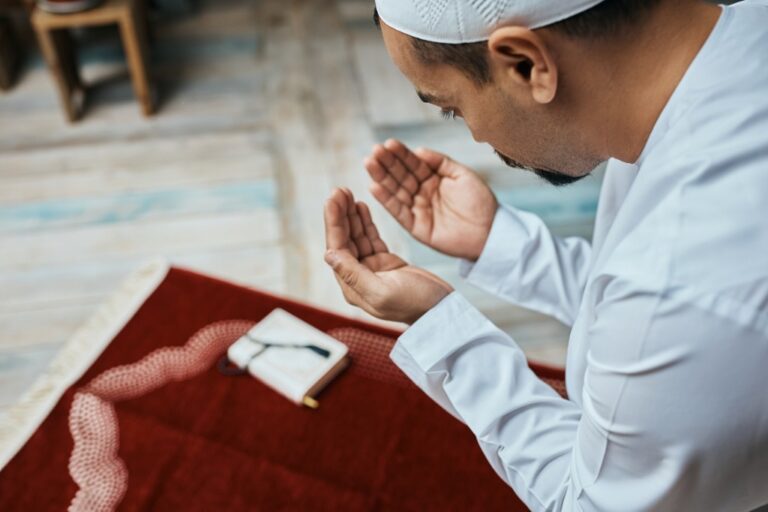How to Perform Maghrib Prayer: Ultimate Guide to Perfecting Maghrib Prayer!
If you’re new to Islam and wondering how to perform the Maghrib prayer properly, you will soon get all the answers.
Salat al-Maghrib, one of the five mandatory prayers, is an essential part of your daily worship routine. This comprehensive guide will simplify each step for you that is performed in Salah.
This crucial knowledge is just moments away! Let’s dive in.
Understanding Maghrib Prayer
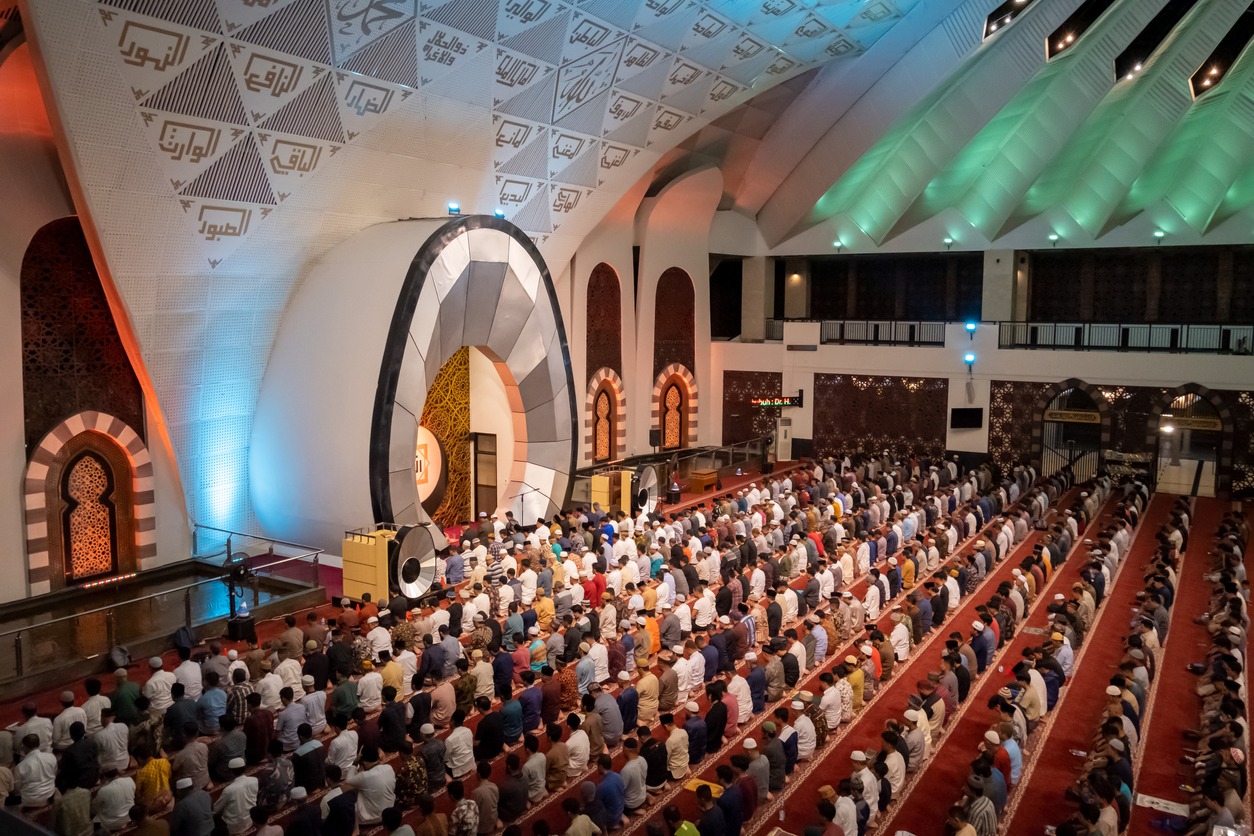

Maghrib prayer is an important component of the Islamic faith, as it is one of the five obligatory prayers.
Definition of Maghrib
The term “Maghrib” is essential in Islam because it is derived from an Arabic word that means “sunset.” It not only denotes a specific time of day but also one of your five obligatory prayers.
You have to perform this prayer at sunset, which marks the end of the day. The primary purpose of Maghrib prayer is to remind Muslims worldwide of their obligation to Allah.
Time for Maghrib Prayer
Determining the precise time for your Maghrib prayer is critical in the Islamic faith. In general, your fourth obligatory daily Salah or Namaaz begins shortly after sunset.
Unlike the Dhuhr and Asr prayers, which can be performed over a more extended period of time, you are encouraged to pray the Maghrib prayer as soon as the call to prayer (Azan) is issued.
It is the only prayer that falls immediately after sunset and has only three Fard Rakahs.
You can use an astronomical timetable to determine the exact sunset time for the start of your Maghrib Prayer. This method combines Quranic observance with a connection to nature’s rhythm, which is a fundamental principle in your Islamic rituals and purification practices.
As a result, it is critical for you to understand your local sunset times to not only follow religious protocols but also to connect deeply with Allah SWT through timely prayers.
Number of Rakats in Maghrib
Maghrib prayer, an essential part of the Islamic faith, consists of a specific number of rakats that must be meticulously performed. Traditionally, three rakats are required for this sunset prayer.
You begin your Salat al-Maghrib with two Nafl rakats, followed by three Fardh (mandatory) rakats.
You can increase your spiritual merit by extending your Salah or Namaaz to five or seven rakats by adding two optional Sunnah prayers after completing the mandatory parts.
You must maintain respect and focus throughout the sequence, strictly adhering to these steps for your Maghrib Prayer Sunnah.
Preparations Before Maghrib Prayer
Before performing the Maghrib Prayer, it is required to perform ablution (wudu), choose a suitable location for prayer, and be aware of the timing for the Maghrib Prayer.
Performing Ablution (Wudu)
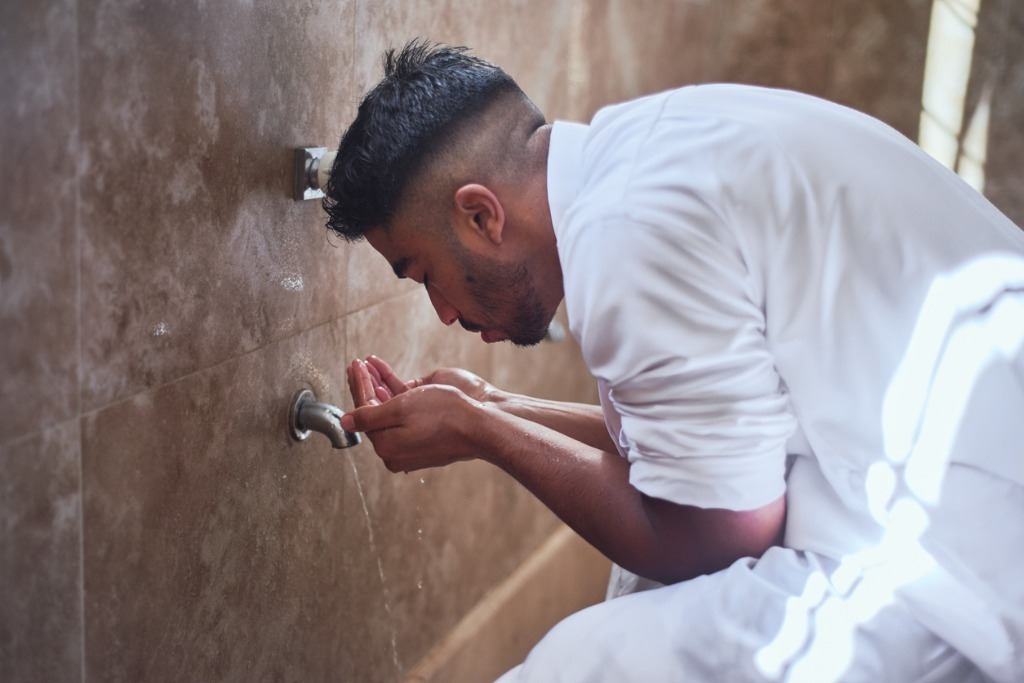

Performing wudu is essential before every prayer. Here are the steps:
- Start Wudu by saying “Bismillah” (In Allah SWT’s name) and wash your hands up to the wrists three times. Sunan Abi Dawud 101
- Rinse your mouth three times, cleaning all areas within it.
- Cleanse your nostrils by sniffing water into them three times and expelling it out.
- Wash your face from the top of the forehead to the bottom of the chin, and from earlobe to earlobe, ensuring that all areas are covered.
- Wash your arms up to and including the elbows, starting with the right arm followed by the left arm.
- Wipe your head by wetting your hands and passing them over the entire head once.
- Cleanse your ears by wiping behind them with wet fingers, using your index finger for the right ear and your thumb for the left ear.
- Finally, wash both feet up to and including the ankles, starting with the right foot followed by the left foot.
Reference: SAHIH BUKHARI, BOOK 4: Ablutions (Wudu’) (iium.edu.my)
Timing of Maghrib Prayer
In the Islamic faith, you perform the Maghrib prayer at a specific time each day, marking the end of the day. It begins shortly after sunset and lasts until the twilight fades completely.
The timing of the Maghrib prayer varies depending on your location and the season. As a Muslim, you should use a timetable to determine the exact time for Maghrib prayer, ensuring you do not miss this vital obligation.
It is critical to understand that rushing through prayers is considered a sin in Islam, so taking your time during Maghrib prayer is highly encouraged. Remember to perform it with focus and devotion, giving it the importance it deserves.
Bonus Tip: Here’s a website you can use for accurate prayer times: www.prayetimes.org
Required Attire and Location for Prayer
When performing the Maghrib prayer, Islam encourages you to dress modestly. Men should cover their navels to their knees, while women should cover their entire body except for their hands and faces.
Wearing appropriate clothing during prayer fosters a respectful and focused environment. The prayer location should be clean and devoid of impurities. During prayer, Muslims seek a quiet and peaceful place where they can face the Qibla, the direction of Mecca’s holy mosque.
This ensures a sense of unity with fellow worshippers around the world.
Detailed Steps to Perform Maghrib Prayer
Performing Maghrib prayer involves several steps, such as the initial Takbeer and Qiyam, reciting the Quran, bowing (Ruku), prostrating (Sujud), sitting between two Sujuds, and concluding with Tasleem.
Read on to learn how to perform each step correctly and establish a fulfilling prayer routine.
Initial Takbeer and Qiyam


The Maghrib prayer begins with the initial Takbeer and Qiyam. In this step, the worshipper raises their hands to their ears, saying “Allahu Akbar” (meaning “God is the greatest”) as they start their prayer. Book 2, Hadith 155
Raising your hands means focusing solely on Allah SWT and leaving worldly distractions behind. You then stand upright, facing the Qibla (the direction of Mecca’s Holy Mosque), ready to begin your devotion.
You establish a strong connection and mentally and spiritually prepare yourself for this sacred act of communication with Allah SWT by beginning with a powerful declaration and standing tall before Him.
Recitation of Quran
In the Maghrib prayer, reciting the Quran holds significant importance. After completing the initial takbeer and standing in qiyam, it is time to recite verses from the Holy Quran.
Before reciting Al-Fatiha and the Quranic verses, it is recommended to recite The Dua of Istiftah, which is a Sunnah of Prophet Muhammad PBUH.
Dua of Istiftah .سُبْحَانَكَ اللّٰهُمَّ وَبِحَمْدِكَ ، وَتَبَارَكَ اسْمُكَ ، وَتَعَالَىٰ جَدُّكَ ، وَلَا إِلٰهَ غَيْرُكَ Subhanakallahumma, wa bihamdika tabarakasmuka wa ta’ala jadduka wa la ilaha ghairuk (Glory and praise be to You, O Allah. Blessed be Your name and exalted be Your majesty, there is none worthy of worship except You.)” Sunan an-Nasa’i 900
Surah al-Fatiha is an important part of every rakat of Maghrib prayer. This chapter opens the door to communication with Allah SWT, acknowledging His role as Lord of all worlds and seeking guidance on the straight path. Book 2, Hadith 172
Prophet Muhammad PBUH has also declared that whoever doesn’t recite Surah Al-Fatiha then his prayer would be invalid:
مَنْ صَلَّى صَلاَةً لَمْ يَقْرَأْ فِيهَا بِأُمِّ الْقُرْآنِ فَهْىَ خِدَاجٌ – ثَلاَثًا – غَيْرُ تَمَامٍ ”
If anyone observes prayer in which he does not recite Umm al-Qur’an (Surah-Fatiha), It is deficient [he said this three times] and incomplete.
Furthermore, it is critical to maintain focus and concentration while reciting Surah al-Fatiha and other portions of the Quran during prayer, immersing oneself in its deep meanings.
Ruku (Bowing)
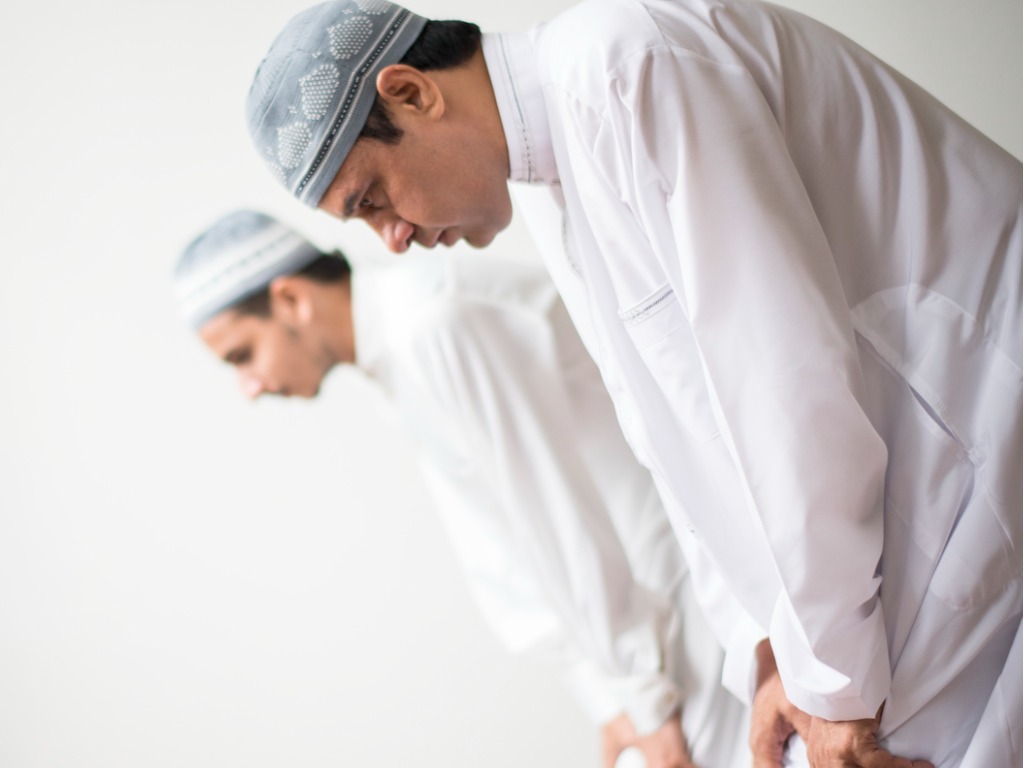

One of the most important actions during the Maghrib prayer is Ruku, or bowing. This position is performed following the completion of Surah Al Fatiha and Quranic recitation. After saying Takbir “Allahu Akbar,” you enter into Ruku, where you place your hands on your knees and bow down in humility before Allah SWT.
During this posture, it is critical to maintain proper balance and a straight back. As the Prophet Muhammad PBUH warned us in the following hadith:
“ لاَ تُجْزِئُ صَلاَةُ الرَّجُلِ حَتَّى يُقِيمَ ظَهْرَهُ فِي الرُّكُوعِ وَالسُّجُودِ ”
A man’s prayer does not avail him unless he keeps his back steady when bowing and prostrating.
Additionally, one should recite “Subhana Rabbi Al Adheem” (Glory be to my Lord Almighty) three times while in Ruku as an act of praise and reverence towards our Creator.
This simple yet profound action represents submission to Allah SWT’s commands and acknowledgment of His greatness. Remember that Ruku serves as a reminder that we are Allah SWT’s servants, seeking His mercy and forgiveness in all aspects of our lives.
Qawmah (Rising from Ruku)
After completing the Ruku, rise from the bowing position and say “Sami Allaahu Liman” (Allah SWT hears those who praise Him). Continue by saying “Rabbanaa wa lak al– hamd” silently, meaning “Our Lord, all praise is due to You.”
Reference: Sunan an-Nasa’i 1072, Sunan Ibn Majah 877
Then, we move on to Sujud.
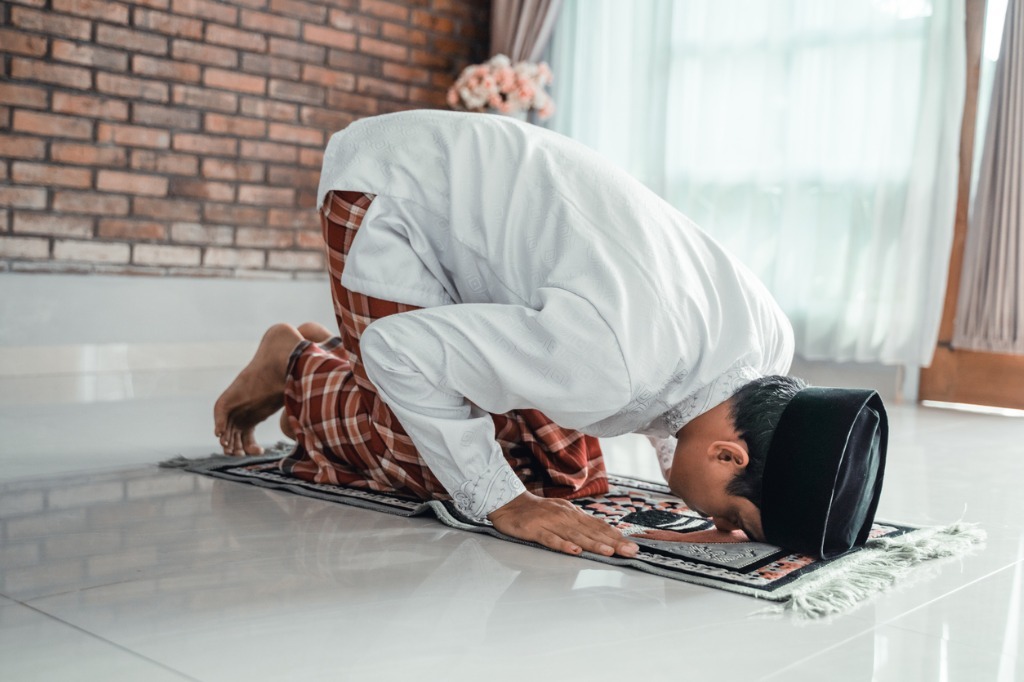

Sujud (Prostration)
Sujud, which refers to prostration, is an important step in your Maghrib prayer. During Sujud, you show total submission to Allah SWT by placing your forehead, head, and nose on the ground.
This posture is seen as a moment of humility and communion with the Almighty. Surprisingly, Sujud is not only about physical posture; it also holds enormous spiritual significance. It is a deeply spiritual act of surrendering yourself to Allah and expressing your devotion and humility before Him.
Prophet Muhammad PBUH has said that during Sujud, supplications (dua) are more likely to be accepted by Allah SWT.
“ أَقْرَبُ مَا يَكُونُ الْعَبْدُ مِنْ رَبِّهِ وَهُوَ سَاجِدٌ فَأَكْثِرُوا الدُّعَاءَ ”
The nearest a servant comes to his Lord is when he is prostrating himself, so make supplication (in this state).
It is a sunnah to say “Subhaana Rabbiy-Al-A’la” three times during sujood. Sunan an-Nasa’i 1046
The act of prostration in the Maghrib prayer serves as a reminder of our reliance on Allah SWT’s mercy and blessings.
In each rakat (cycle) of the Maghrib prayer, there are two sajdahs (prostrations). After completing these prostrations, we sit between them before rising for the next rakaat or concluding the prayer.
Sujud is a powerful symbol of devotion and surrender in our worship. It humbles us and reminds us of our insignificance compared to the greatness of Allah SWT. Through this act, we express our deep reverence and submission to Him, acknowledging He is the source of all blessings and mercy.
Sitting between Two Sujuds (Jalsah)
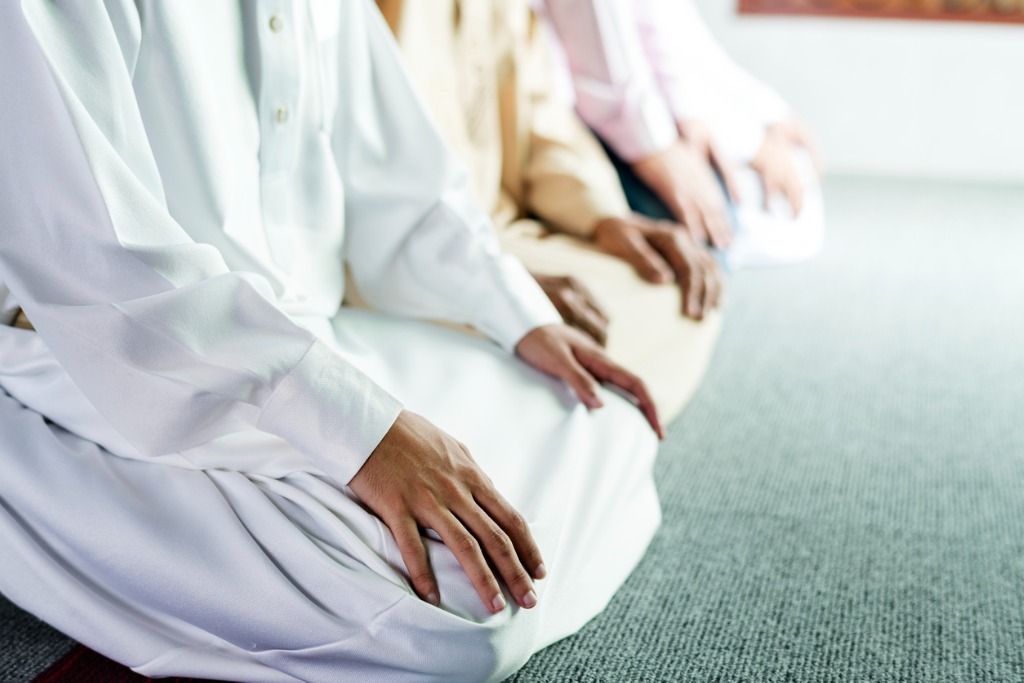

A significant part of your Maghrib prayer is sitting between two Sujuds. After completing the first prostration, you sit on your left leg, with your right foot upright and your toes pointing towards the Qiblah.
This posture allows for a moment of reflection and supplication. It provides you with a brief pause before moving into the second prostration.
Sitting between two Sujuds reminds you to use this precious time to seek forgiveness, express gratitude, or make personal duas (supplications) to Allah SWT. It’s a moment to connect with Him on a personal level and pour your heart out in prayer.
You may also recite “Rabbighfirli” twice during Jalsah as it is a Sunnah of the Prophet PBUH. Sunan an-Nasa’i 1069
Second Sujud and Preparation for Second Rakaah
You will again prostrate during the second Sujud of the Maghrib prayer. This is a humble position of submission to Allah SWT, where supplications are highly valued.
After finishing the second Sujud, rise to prepare for the second rakaah (unit) of the Maghrib prayer. Remember to quietly recite “Subhaana Rabbiy-Al-A’la” during both sujuds to glorify Allah SWT.
Maintaining focus and concentration as you move from one position to another is critical in ensuring that every movement is done with devotion and sincerity toward fulfilling this obligatory act of worship.
Qaada (Sitting for Tashahud)
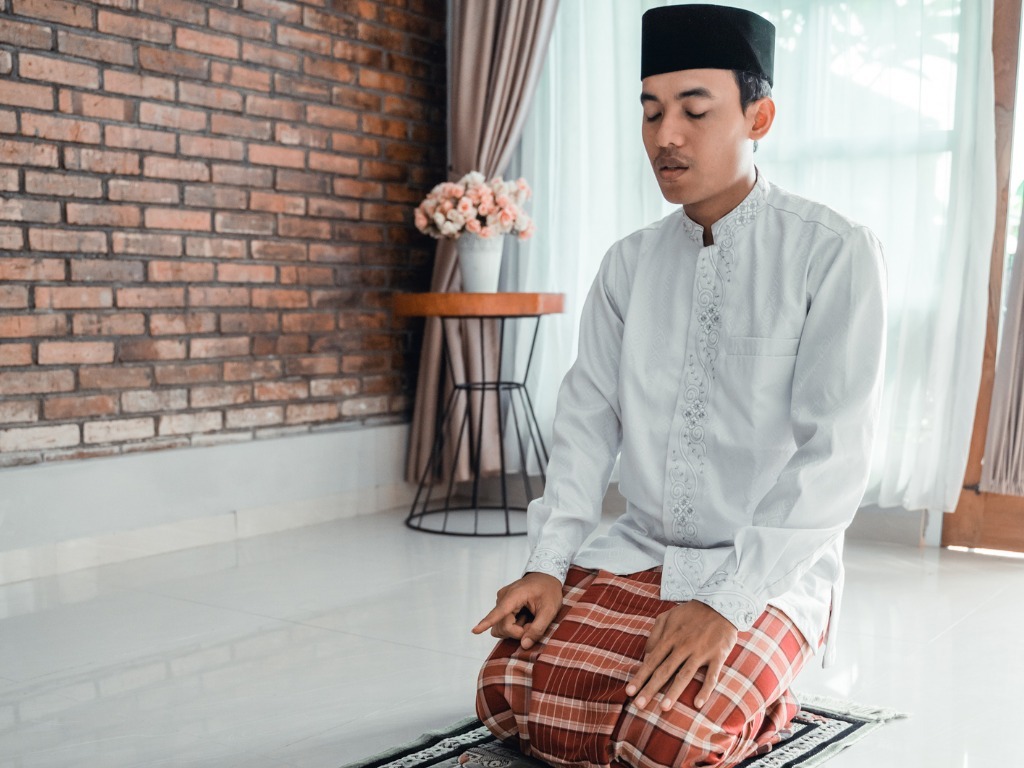

After completing the second prostration (Sajda) in the second rakaat of your Maghrib prayer, comes the Qaada or sitting position. This is a crucial part of the prayer where you sit on your left leg with your right foot upright and your toes pointing towards the Qiblah.
In this sitting posture, you rest your hands on your thighs, close to your knees. It is in this position that you recite the Tashahud, which includes acknowledging Allah SWT’s oneness and sending blessings upon Prophet Muhammad PBUH and his family.
You have to Recite this: “At-tahiyyatu lillahi was-salawatu wat-tayyibat. As-salamu ‘alaika ayyuhan-nabiyyu wa rahmatullahi wa barakatuh” (All compliments, prayers, and pure words are due to Allah SWT. Peace be upon you, O Prophet, and the mercy of Allah SWT and His blessings). Sahih al-Bukhari 831
Rising for the Third Rakaat:
After completing the Tashahud, stand up and say Allahu Akbar to begin the third rakaat of the Maghrib prayer.
Remember to remain calm and focused throughout the prayer. The rising for the third rakaat represents the transition into the next phase of the prayer and the continuation of devotion.
Continuing the Third Rakah


Pray the entire Rakah as before, but after the second sujood, keep sitting and pray Tasahud and recite Durood-e-Ibrahimi and the following Dua:
Durood e ibrahimi: Alla Huma Salli Ala Muhammadiw Wa Ala Aali Muhammadin Kamaa Sallaita Ala Ibrahima Wa Ala Aali Ibrahima Innaka Hamidum Majid. Allahumma Baarik Ala Muhammadiw Wa Ala Aali Muhammadin Kamaa Baarakta Ala Ibrahima Wa Ala Aali Ibrahima Innaka Hamidum Majid. Sahih al-Bukhari 3370
The Du’a: Allahumma Rabbana atina fid dunya hasanah wa fil akhirati hasanah wa qina ‘adhaban nar” , Sahih al-Bukhari 4522
Tasleem (Salutation to end the prayer)
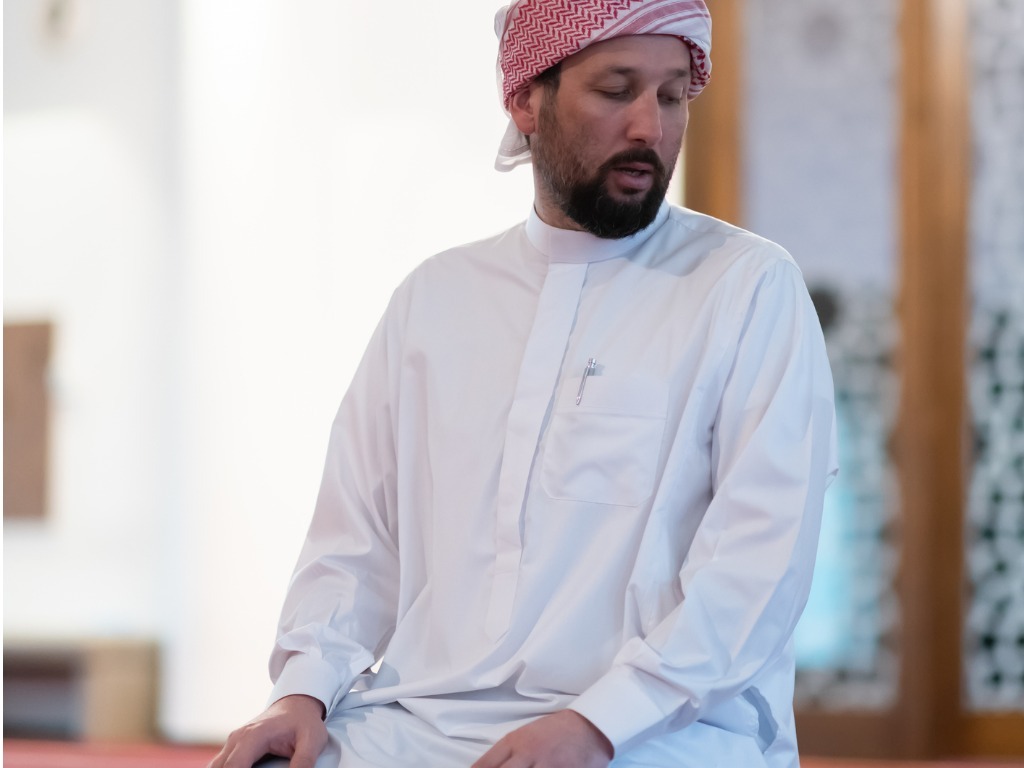

The Tasleem is the final step in your Maghrib prayer and serves as a salutation at the end.
After finishing the last rakat, you turn to the right and say, “Assalamu alaikum wa rahmatullah” (May Allah SWT’s peace and mercy be upon you). Then, you turn to the left and repeat this phrase.
This act represents spreading peace and blessings to all believers in your vicinity. The Tasleem indicates that your prayer has concluded, allowing you to go about your daily life knowing you have fulfilled your obligation to worship Allah SWT.
Conclusion
Performing the Maghrib prayer is an integral part of your Islamic faith. You can strengthen your connection with Allah SWT by understanding this prayer’s timing, preparation, and sequence.
Each step, whether reciting Quranic verses or bowing in reverence, holds spiritual significance and brings peace to your heart. Let us all strive to perform the Maghrib prayer with sincerity and devotion, embracing its beautiful rituals to approach our Creator. May it be a source of spiritual growth and a reminder of Allah’s presence in our lives.
FAQs
What is the Maghrib prayer, and when should it be performed?
The Maghrib prayer is one of Islam’s five daily prayers, held after sunset. It is the day’s fourth obligatory prayer.
Are there any specific supplications or dua’s to recite during the Maghrib prayer?
While no specific supplications or duas must be recited during the Maghrib prayer, you may make personal supplications between certain positions, such as after completing rukoo’ and before entering sujood.
Can women perform the Maghrib prayer at home, or do they need to go to a mosque?
Women can pray at home or in a mosque, depending on their personal preference and the availability of facilities. In Islam, either option is acceptable as long as proper cleanliness, modesty, and concentration are maintained during worship.
How long after Athan can you pray Maghrib?
- Muslims can pray Maghrib immediately after the adhan (call to prayer) for Maghrib has been announced.
- There is no specific time limit or delay between the adhan and praying Maghrib.
- It is recommended to perform the Maghrib prayer as soon as possible after hearing the adhan to receive its full reward.
- However, it is also permissible to delay praying Maghrib for a short period of time if necessary, such as due to unavoidable circumstances or completing essential tasks.
- It is important to note that intentionally delaying prayers without a valid reason is discouraged in Islam.
How do we pray Asr and Maghrib together?
It is not permissible to combine Asr and Maghrib. However, under certain circumstances, one can combine Zuhr and Asr & Maghrib and Isha.
كيفية أداء صلاة المغرب: الدليل الشامل لإتقان صلاة المغرب!
إذا كنت جديدًا في الإسلام وتتساءل عن كيفية أداء صلاة المغرب بشكل صحيح، فسوف تحصل قريبًا على جميع الإجابات. صلاة المغرب، إحدى الصلوات الخمس المفروضة، هي جزء أساسي من روتين عبادتك اليومي. سيعمل هذا الدليل الشامل على تبسيط كل خطوة يتم تنفيذها في الصلاة. هذه المعرفة الحاسمة على بعد لحظات فقط! دعونا نتعمق.فهم صلاة المغرب


تعريف المغرب
مصطلح "المغرب" ضروري في الإسلام لأنه مشتق من كلمة عربية تعني "غروب الشمس". فهو لا يشير فقط إلى وقت محدد من اليوم، بل يشير أيضًا إلى إحدى صلواتك الخمس المفروضة. عليك أن تؤدي هذه الصلاة عند غروب الشمس، وهو نهاية اليوم. الغرض الأساسي من صلاة المغرب هو تذكير المسلمين في جميع أنحاء العالم بالتزاماتهم تجاه الله.وقت صلاة المغرب
تحديد الوقت الدقيق لصلاة المغرب أمر بالغ الأهمية في العقيدة الإسلامية. بشكل عام، تبدأ الصلاة أو الصلاة اليومية الإلزامية الرابعة بعد وقت قصير من غروب الشمس. على عكس صلوات الظهر والعصر، التي يمكن أداؤها على مدى فترة زمنية أطول، ننصحك بصلاة المغرب بمجرد صدور الأذان. وهي الصلاة الوحيدة التي تقع بعد غروب الشمس مباشرة ولها ثلاث ركعات فقط. يمكنك استخدام جدول زمني فلكي لتحديد وقت غروب الشمس بالضبط لبدء صلاة المغرب. تجمع هذه الطريقة بين حفظ القرآن والارتباط بإيقاع الطبيعة، وهو مبدأ أساسي في شعائركم الإسلامية وممارساتكم التطهيرية. نتيجة لذلك، من المهم بالنسبة لك أن تفهم أوقات غروب الشمس المحلية لديك ليس فقط لاتباع البروتوكولات الدينية ولكن أيضًا للتواصل بعمق مع الله سبحانه وتعالى من خلال الصلاة في الوقت المناسب.عدد الركعات في المغرب
صلاة المغرب، وهي جزء أساسي من العقيدة الإسلامية، تتكون من عدد محدد من الركعات التي يجب أداؤها بدقة. تقليديا، هناك حاجة إلى ثلاث ركعات لصلاة غروب الشمس. تبدأ صلاة المغرب بركعتين نافلة، تليها ثلاث ركعات الفرض. يمكنك زيادة الجدارة الروحية الخاصة بك عن طريق تمديد صلاتك أو نماز إلى خمس أو سبع ركعات عن طريق إضافة صلاتين اختياريتين من السنة بعد الانتهاء من الأجزاء الإلزامية.يجب عليك الحفاظ على الاحترام والتركيز طوال التسلسل، والالتزام الصارم بهذه الخطوات الخاصة بسنة صلاة المغرب.الاستعدادات قبل صلاة المغرب
قبل أداء صلاة المغرب، يجب الوضوء، واختيار المكان المناسب للصلاة، ومعرفة توقيت صلاة المغرب.الوضوء


- ابدأ الوضوء بقول "بسم الله" واغسل يديك حتى الرسغين ثلاث مرات. سنن أبي داود 101
- اشطف فمك ثلاث مرات، ونظف جميع المناطق بداخله.
- نظف فتحتي أنفك عن طريق استنشاق الماء داخلهما ثلاث مرات وإخراجه إلى الخارج.
- اغسل وجهك من أعلى الجبهة إلى أسفل الذقن، ومن شحمة الأذن إلى شحمة الأذن، مع التأكد من تغطية جميع المناطق.
- اغسل ذراعيك حتى المرفقين، بدءًا من الذراع اليمنى ثم الذراع اليسرى.
- امسح رأسك عن طريق تبليل يديك وتمريرهما على الرأس بالكامل مرة واحدة.
- تطهر أذنيك عن طريق مسح خلفهما بأصابعك المبللة، باستخدام إصبع السبابة للأذن اليمنى والإبهام للأذن اليسرى.
- أخيرًا، اغسل كلا القدمين حتى الكعبين، بدءًا من القدم اليمنى ثم اليسرى.
توقيت صلاة المغرب
في العقيدة الإسلامية، تؤدي صلاة المغرب في وقت محدد كل يوم، إيذانا بنهاية اليوم. يبدأ بعد وقت قصير من غروب الشمس ويستمر حتى يتلاشى الشفق تمامًا. يختلف توقيت صلاة المغرب حسب موقعك والموسم. كمسلم، يجب عليك استخدام جدول زمني لتحديد الوقت الدقيق لصلاة المغرب، مما يضمن عدم تفويت هذا الواجب الحيوي. من المهم أن نفهم أن الاستعجال في الصلاة يعتبر خطيئة في الإسلام، لذا فإن قضاء وقت أثناء صلاة المغرب أمر مشجع للغاية. تذكر أن تؤديها بتركيز وإخلاص، مع إعطائها الأهمية التي تستحقها. نصيحة إضافية: إليك موقع ويب يمكنك استخدامه لمعرفة أوقات الصلاة بدقة: www.prayetimes.orgالزي المطلوب ومكان الصلاة
عند أداء صلاة المغرب، يشجعك الإسلام على ارتداء ملابس محتشمة. يجب على الرجال تغطية سرتهم إلى ركبتيهم، بينما يجب على النساء تغطية جميع أجسادهن باستثناء اليدين والوجه. إن ارتداء الملابس المناسبة أثناء الصلاة يعزز بيئة محترمة ومركزة. أن يكون مكان الصلاة نظيفاً وخالياً من النجاسات. أثناء الصلاة، يبحث المسلمون عن مكان هادئ وسلمي حيث يمكنهم مواجهة القبلة، اتجاه المسجد الحرام في مكة. وهذا يضمن الشعور بالوحدة مع رفاقه المصلين حول العالم.الخطوات التفصيلية لأداء صلاة المغرب
وتشتمل أداء صلاة المغرب على عدة خطوات، مثل التكبير الأولي والقيام، وقراءة القرآن، والركوع، والسجود، والجلوس بين السجدتين، والانتهاء بالتسليم. تابع القراءة لتتعلم كيفية تنفيذ كل خطوة بشكل صحيح وإنشاء روتين صلاة مرضي.تكبيرة القيام وقيام


تلاوة القرآن
في صلاة المغرب، تلاوة القرآن لها أهمية كبيرة. بعد الانتهاء من التكبيرة الأولى والقيام، يأتي وقت قراءة آيات من القرآن الكريم. قبل قراءة الفاتحة والآيات القرآنية، ينصح بقراءة دعاء الاستفتاح، وهو سنة النبي محمد صلى الله عليه وسلم. دعاء الاستفتاح .سُبْحَانَكَ اللَّه وَبِحَمْدِكَ ، وَتَبَارَكَ اسْمُكَ ، وَتَعَالَى جَدُّكَ ، وَلَا إِلَهَ غَيْرُكَ سبحانك الله وبحمدك تباركاسموكا ولا إله غيرك تعالى الخاص بك جلالتك لا إله إلا أنت)" سنن النسائي 900سورة الفاتحة جزء مهم من كل ركعة من صلاة المغرب. يفتح هذا الفصل باب التواصل مع الله سبحانه وتعالى، والاعتراف بدوره رب العالمين، وطلب الهداية إلى الصراط المستقيم. الكتاب الثاني، الحديث 172 وقد أعلن النبي محمد صلى الله عليه وسلم أن من لم يقرأ سورة الفاتحة فإن صلاته باطلة: مَنْ صَلَّى صَلاَةً لَمْ يَقْرَأْ فِيهَا بِأُمِّ الْقُرْآنِ فَهْىَ خِدَاجٌ - ثَلاَثًا - غيرُ تَمَامٍ " ومن صلى صلاة لم يقرأ فيها بأم القرآن فهي ناقصة [قال ذلك ثلاث مرات] وغير كاملة. صحيح مسلم 395أ علاوة على ذلك، من المهم الحفاظ على التركيز أثناء قراءة سورة الفاتحة وأجزاء أخرى من القرآن أثناء الصلاة، والانغماس في معانيها العميقة.الركوع (الانحناء)


القومة (النهوض من الركوع)
وبعد الانتهاء من الركوع، قم من الركوع وقل: "سمع الله لمن حمده". استمر بقول "ربنا ولك الحمد" بصمت، أي "ربنا ولك الحمد". المرجع: سنن النسائي 1072، سنن ابن ماجه 877ثم ننتقل إلى السجود.
السجود
السجود، والذي يشير إلى السجود، هو خطوة مهمة في صلاة المغرب. أثناء السجود، تظهر الاستسلام التام لله سبحانه وتعالى من خلال وضع جبهتك ورأسك وأنفك على الأرض. يُنظر إلى هذا الموقف على أنه لحظة تواضع وتواصل مع الله عز وجل. من المثير للدهشة أن السجود لا يقتصر على الوضع الجسدي فقط؛ كما أنها تحمل أهمية روحية هائلة. إنه عمل روحي عميق لتسليم نفسك لله والتعبير عن إخلاصك وتواضعك أمامه. قال النبي محمد صلى الله عليه وسلم أنه أثناء السجود، يكون الدعاء أكثر قبولا من الله سبحانه وتعالى. " أَقْرَبُ مَا يَكُونُ الْعَبْدُ مِنْ رَبِّهِ وَهُوَ سَاجِدٌ فَأَكْثِرُوا الدُّعَاءَ " أقرب ما يكون العبد من ربه وهو ساجد، فادعوا. صحيح مسلم 482 ومن السنة أن يقول " سبحان ربي الأعلى " ثلاث مرات أثناء السجود. سنن النسائي 1046 إن السجود في صلاة المغرب هو بمثابة تذكير لاعتمادنا على رحمة الله سبحانه وتعالى وبركاته. في كل ركعة من صلاة المغرب سجدتان. وبعد الانتهاء من هذه السجدات نجلس بينهما قبل أن نقوم إلى الركعة التالية أو ننهي الصلاة. السجود هو رمز قوي للإخلاص والاستسلام في عبادتنا. إنه يتواضع ويذكرنا بعدم أهميتنا أمام عظمة الله سبحانه وتعالى. وبهذا الفعل نعبر عن عميق خشوعنا وخضوعنا له، معترفين بأنه مصدر كل البركات والرحمات.الجلوس بين السجدتين
السجود الثاني والاستعداد للركعة الثانية
وسوف تسجد مرة أخرى في السجدة الثانية من صلاة المغرب. وهذا موقف متواضع من الخضوع لله سبحانه وتعالى، حيث يكون الدعاء ذو قيمة عالية. بعد الانتهاء من السجدة الثانية، قم للاستعداد للركعة الثانية من صلاة المغرب. تذكر أن تقرأ بهدوء "سبحان ربي الأعلى" أثناء السجدتين لتمجيد الله سبحانه وتعالى. يعد الحفاظ على التركيز أثناء انتقالك من موضع إلى آخر أمرًا بالغ الأهمية لضمان أن كل حركة تتم بإخلاص وإخلاص لتحقيق هذه العبادة الإلزامية.الصلاة (الجلوس للتشهد)


القيام للركعة الثالثة:
بعد الانتهاء من التشهد، قم وقل الله أكبر لتبدأ الركعة الثالثة من صلاة المغرب. تذكر أن تظل هادئًا ومركزًا طوال الصلاة. ويمثل النهوض للركعة الثالثة الانتقال إلى المرحلة التالية من الصلاة واستمرار العبادة.مواصلة الركعة الثالثة


التسليم (تحية إنهاء الصلاة)
الاستنتاج
إن أداء صلاة المغرب جزء لا يتجزأ من عقيدتك الإسلامية. يمكنك تقوية علاقتك بالله سبحانه وتعالى من خلال فهم توقيت هذه الصلاة وإعدادها وتسلسلها. كل خطوة، سواء تلاوة آيات قرآنية أو ركوع خشوع، تحمل أهمية روحية وتجلب السلام إلى قلبك. فلنجتهد جميعا في أداء صلاة المغرب بإخلاص وإخلاص، ملتزمين بشعائرها الجميلة للتقرب إلى خالقنا. نرجو أن يكون مصدرًا للنمو الروحي وتذكيرًا بحضور الله في حياتنا.الأسئلة الشائعة
ما هي صلاة المغرب ومتى يجب أداؤها؟
صلاة المغرب هي إحدى الصلوات الخمس في الإسلام، وتقام بعد غروب الشمس. وهي صلاة اليوم الفريضة الرابعة.هل هناك أدعية أو دعاء محدد يقال في صلاة المغرب؟
على الرغم من أنه لا يجب تلاوة أدعية أو أدعية محددة أثناء صلاة المغرب، إلا أنه يمكنك الدعاء الشخصي بين مواضع معينة، مثل بعد الانتهاء من الركوع وقبل الدخول في السجود.هل يجوز للمرأة أداء صلاة المغرب في البيت أم يجب عليها الذهاب إلى المسجد؟
ويمكن للمرأة أن تصلي في المنزل أو في المسجد، حسب تفضيلها الشخصي وتوافر المرافق. في الإسلام، أي من الخيارين مقبول طالما تم الحفاظ على النظافة والتواضع والتركيز أثناء العبادة.كم من الوقت يمكن صلاة المغرب بعد الأذان؟
- يمكن للمسلمين صلاة المغرب مباشرة بعد إعلان الأذان (الأذان) لصلاة المغرب.
- ليس هناك وقت محدد أو تأخير بين الأذان وصلاة المغرب.
- ويستحب إقامة صلاة المغرب في أسرع وقت ممكن بعد سماع الأذان للحصول على أجره كاملا.
- ومع ذلك، يجوز أيضًا تأخير صلاة المغرب لفترة قصيرة من الوقت إذا لزم الأمر، مثل لظروف قاهرة أو إكمال المهام الأساسية.
- من المهم ملاحظة أن تأخير الصلاة عمدًا دون سبب وجيه أمر غير محبذ في الإسلام.

